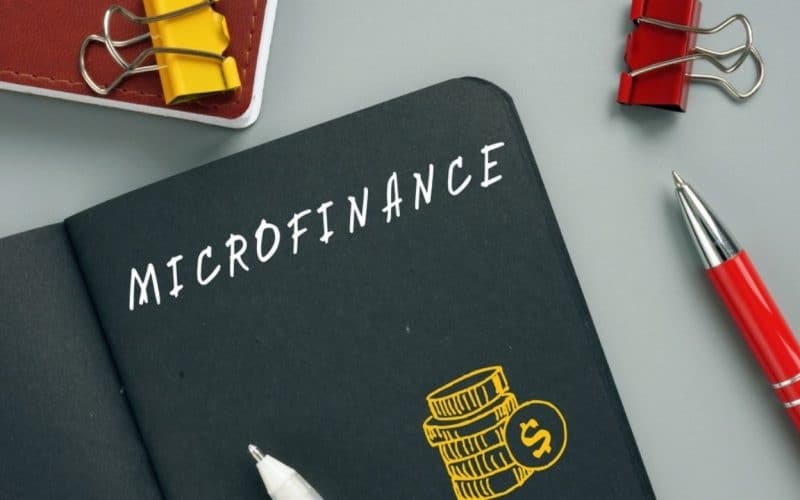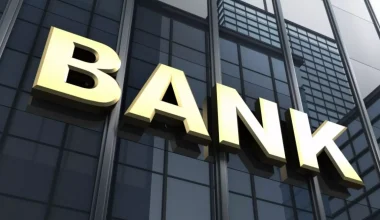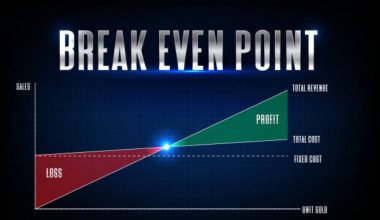Amongst all financial operations/services, microfinance is one service that greatly contributes to the economic development of a country. Microfinance originally started with microcredit, which is the practice of providing extremely small loans to those who do not have a steady source of income or any credit history. In addition, it supports entrepreneurs who do not have the financial backing to start a small business or capitalize on an idea. Microfinance includes several services, such as savings accounts, checking accounts, fund transfers, micro insurance, and microcredit. It doesn’t end there. If you want to know more about microfinance, continue reading this article.
Microfinance Definition
Microfinance is a type of financial service that is provided to low-income individuals and small businesses that have no access to regular banking services. Also known as Microcredit, it allows people to receive a good amount of small business loans safely and in line with ethical lending practices. In addition, it involves the provision of savings and checking accounts, microinsurance, and payment systems.
According to Wikipedia, Microfinance services are designed to reach excluded customers, usually poorer population segments, possibly socially marginalized, or geographically more isolated, and to help them become self-sufficient.
The majority of microfinancing operations happen in developing nations like Indonesia, Uganda, and Serbia. For many of them, microfinance is a way to promote economic development, employment, and growth through the support of micro-entrepreneurs and small businesses. While for other countries it is a way for the poor to manage their finances more effectively and take advantage of economic opportunities while managing the risks associated with it. Generally, The World Bank estimates that more than 500 million people have benefited from microfinance-related operations.
RELATED ARTICLE: Microfinance Bank Updated List 2023: (+ how to apply guide)
History of Microfinance
The concept of Microfinance didn’t just start today. It goes back to the middle 1800s when Lysander Spooner, a theorist was writing about the benefits of small credits to entrepreneurs and farmers as a way of getting people out of poverty.
Asides from Spooner, Friedrich Wilhelm founded the first cooperative lending banks to support farmers in rural Germany. Afterward, the first microlending happened in the Irish Loan Fund System. It was introduced by Jonathan Swift, who sought ways to make life better for Irish citizens. The first organization to start shaping the modern industry of Microfinancing was Grameen Bank, which was founded by Muhammad Yunus of Bangladesh.
The bank provided loans to its citizens and suggested that its customers subscribe to its “16 Decisions,” which is a basic list of ways that the poor can improve their lives. In 2006, Grameen Bank and Yunus received a Nobel Peace Prize for their efforts in developing the microfinance system. Additionally, India’s SKS Microfinance has grown to become one of the largest microfinance operations in the world. It was established in 1998 and works similarly to Grameen Bank.
Now, with microfinancing, small businesses and people in the developing world have significant resources that can support their livelihood.
How Microfinance Works
Microfinance involves micro-loans, micro-savings, and micro-insurance. Microfinance institutions provide small business owners with loans they require to kick-star their businesses. In addition, it involves helping impoverished citizens by providing them with the necessary capital to start a business and achieve financial independence. These loans are given to the borrower on a platter of gold, as they require no collateral. However, the bank has to ensure its money, hence, the interest rates are higher.
Many of the recipients of a microfinance loan are in developing countries, and may not have been able to obtain a traditional loan. Thus, despite being excluded from banking services, those who have low income still try to make attempts to save, borrow or acquire credit or insurance. Hence, they turn to family, friends, or even loan sharks for help. This makes microfinance, the hero of the day.
RELATED ARTICLE: MICROFINANCE LOAN: TOP COVID-19PICKS & HOW TO APPLY (+QUICK GUIDE)
What is Micro Finance Loan?
Microfinance is a method of providing small company owners and entrepreneurs in India’s impoverished regions with loans, credit, insurance, access to savings accounts, and money transfers. People without access to these conventional financial resources are the ones who benefit from microfinance.
What is the Maximum Limit of Loan Under Microfinance?
The term “microfinance loan” will henceforth be used to describe collateral-free loans made to households with annual household incomes of up to Rs 3 lakh.
Can I Get A Loan From A Microfinance Bank?
For higher loan quantities, please visit the SME section. Currently, loans are available in the N15,000 to N5,000,000 range, with a maximum duration of 18 months. * For micro loans, returning customers may apply for up to N5,000,000.
How Long Does It Take To Get A Micro Loan?
It should take at least two to three weeks to complete. Think about additional rapid business financing choices if you require funding sooner.
Importance of Microfinance
The role of microfinance in citizens with low income cannot be overemphasized. Below is the importance of microfinance.
- Microfinance provides resources and access to capital to those with a low-income status. These resources include; checking accounts, loans, or lines of credit.
- It provides a collateral-free loan to financially underserved people. It offers minimum paperwork and a stress-free procedure, which makes it perfect for fundraising.
- In case of an emergency, microfinance allows for easy disbursement of loans.
- Microfinance provides the funds needed to kickstart a business and set it up for profit in the long run.
- It helps people meet their financial needs by providing unmatched services when it comes to loans or credit.
Microfinance Models
According to CFI, two models outline how microfinance is operated. They include;
- Banking for individual entrepreneurs and small businesses revolved around relationship-based banking.
- Services for a group, where multiple individuals come together to form a group to collectively apply for a loan.
When applying for microcredit, individuals may not get a large loan hence, they may decide to come together and form a group to qualify for a larger loan.
RELATED ARTICLE: Development Finance: Easy Best Practices to scale any Business(+ Detailed Courses)
Pros and Cons of Microfinance
A lot of people say that microfinance is very beneficial, as it provides financial opportunities for those in underdeveloped nations or those with lower socioeconomic backgrounds.
Another benefit of microfinance is that it encourages people to be financially independent and provides them with financial resiliency to be able to cover any large unforeseen expenses.
Additionally, microfinance helps to provide financial services to those in remote locations where traditional financial institutions do not operate. Finally, microfinance can encourage entrepreneurial activity and business development in poverty-stricken areas.
Despite these advantages, Microfinance still has some downsides. One of them is that it can take advantage of those in tough economic situations, a situation similar to loan sharks.
Some microfinance loans may include interest that can be as high as 30% or even higher. Furthermore, according to several studies, recipients of microfinance loans did not realize an improvement in their annual net income.
Who Benefits From Microfinancing?
While microfinance has major benefits for those the stateside, it still certainly benefits those in the developing world. For example, cell phones are being used as a way to bring financial services such as microlending to those living in Kenya.
It’s also made headway in the United States, where burgeoning entrepreneurs with no collateral can take out loans of less than $50,000 to jump-start their business ventures.
Microfinance also makes women free from poverty. Oftentimes, the loans can be as small as $60. For example, a young single mother from Paraguay took this small investment of $60 to start an empanada and snack stand. She continued building her business, repaying this loan and taking out larger loans to buy a building for her stand, complete with a refrigerator and attached home for her family. This shows the importance of microfinance to women.
Women are the most beneficiaries of microfinance loans, making up to 80% of loans in 2018, according to the 2019 Microfinance Barometer. Also, a large number of women who request these loans live in rural areas with limited resources.
According to the Microfinance Barometer, the microfinance industry is also growing rapidly. In 2018, there were 139.9 million microfinance borrowers, for a total of $124 billion in loans. India accounted for most of these borrows, followed by Bangladesh, and Vietnam.
SEE ALSO: ONLINE LOANS: BEST OPTION TO LOOK OUT FOR (+ HOW TO APPLY GUIDE)
Microfinance Bank Loan
Microfinance institutions operate majorly to give out loans to small businesses to enhance operation.
The loans are available to help you grow and maintain your business. The type of loan you receive depends on your financial need.
The different types of loans obtainable are;
- Individual Loan
- Group Loan
- School Improvement Loan
- School Fees Loan
- Small Enterprise Loan
- Asset Finance Loan
- Working Capital Loan
- Consumer Loan
Microfinance Institutions
A microfinance institution is an organization that provides financial services for Micro Small and Medium Enterprises.
These institutions operate more in developing countries and vary in size and scope. Usually, they begin as a non-government organization (NGO) focusing on giving out loans to individuals, before they metamorphosed into banks, offering full financial services.
Oftentimes, microfinance institutions give loans to small groups of people who are jointly liable for the repayment of the debt.
The payback ratio of micro-entrepreneurs to microfinance institutions is an impressive 95-98%.
In Nigeria, there are over 1000 officially registered microfinance banks. Here’s a list of the best.
RELATED ARTICLE: Loans: Top Opportunity for funding in 2023 (detailed application guide)
- ADDOSSER Microfinance Bank Limited
- LAPO Microfinance Bank
- Mainstreet Microfinance Bank Nigeria
- Accion Microfinance Bank Limited
- AB Microfinance Bank Nigeria
- Fina Trust Microfinance Bank
- Microfinance Mutual Trust
- FINCA Microfinance
- Fortis Microfinance Bank Plc
- Rehoboth Microfinance Bank
- Nirmal Microfinance Bank
Let’s look at two of the best.
#1. LAPO Microfinance Bank
LAPO microfinance bank is one of the successful microfinance institutions in Nigeria. With over 30 years of experience, LAPO microfinance bank has developed a name for itself in cities like Oyo, Kwara, Lagos, and Ogun State.
In 2010, LAPO MFB obtained approval from the Central Bank of Nigeria (CBN) to operate as a regulated microfinance bank.
More so, the bank aims to develop small businesses into profitable businesses in Nigeria. Thus, it provides entrepreneurs with outstanding money lending and microfinance services.
LAPO MFB offers unsecured loans of up to NGN 500,000 for small businesses and NGN5,000,000 for small and Medium-scale Enterprises.
#2. Nirsal Microfinance Bank
Nirsal Microfinance bank is a CBN licensed institution offering credit facilities for many purposes in Nigeria. These purposes include Agricultural loans, Microloans, SME loans, and Asset Financing.
Nirsal offers both small-scale and large-scale loans at competitive rates. The loan package you choose depends on your financial condition.
More so, to access any form of loan in Nirsal bank, you must possess the following documents;
- Letter of employment
- Staff identity card
- Payslip
- Other forms of identification (National Identity card, international passport, etc)
- Utility bill
- 2 passport photographs
- Guarantor form
- 6 months due bank account statement.
- Letter of confirmation of appointment/employment.
- Every direct debit is placed on the customer’s account.
- Execution of dud cheque indemnity form.
RELATED ARTICLE: Micro Loans: Guide To Help You Make Informed Decisions (+ All You Need)
Factors to consider before applying for microfinance loans in Nigeria
When applying for a loan in Nigeria, it is important to note some factors. Firstly, is that the tenure of a loan depends on the loan type. And this tenure may range anywhere from 1-3 months, 4-6 months, and 4-12 months respectively.
The maximum maturity date is 18 months. And this only applies to businesses that receive loans worth up to 5 million naira credit facilities.
Also, the interest rate for Microfinance loans ranges from 5% to 6% depending on the loan size.
Next is that the customer must have at least 6 months of an active and serviced bank account. This proves loyalty to the bank to a certain point.
Again, you’d have to separate your account from your business account for easy accountability.
In general, your business must be active for at least one year.
How to apply for a Microfinance Loan in Nigeria
To apply for a microfinance loan in Nigeria, you have to visit the microfinance institution of your choice with the following documents;
- Loan application form
- Excellent Business Proposal (for SMEs)
- Letter of Application (for individuals)
- Valid means of identification (National I.D card, International Passport, Driver’s License)
- Copy of recent utility bill
- 4 recent passport photographs
- Evidence of the business location
Are Microloans Easy to Get?
With a conventional loan, you’ll generally need to give the lender a sizable amount of collateral. Because they demand little to no collateral, microloans are simpler to get.
What Type of Loan is Easiest To Get?
The easiest loans to get approved for would probably be payday loans, car title loans, pawnshop loans, and personal installment loans. These are all short-term cash solutions for bad credit borrowers in need. Many of these options are designed to help borrowers who need fast cash in times of need.
Conclusion
Although microfinance has been happening since the 1970s, it is now much more relevant to investors, finance professionals, and individuals. Microfinance institutions have served as agents of economic development over the years. And this is because of its core business objective, which is to give out loans to business owners to enhance operations.
I hope you find this post useful.
All the best!
Related Article
- MSC FINANCE: Best online and onsite picks for 2023(+ quick how to apply guide)
- Personal Finance: Basics, Importance, Types, Management ( + Free Software)
- PRINCIPLES OF FINANCE
- MAERSK MY FINANCE: 2023 REVIEW (+ALL YOU SHOULD KNOW).
- Cash-out refinance loan explained (+ requirements and tools)






